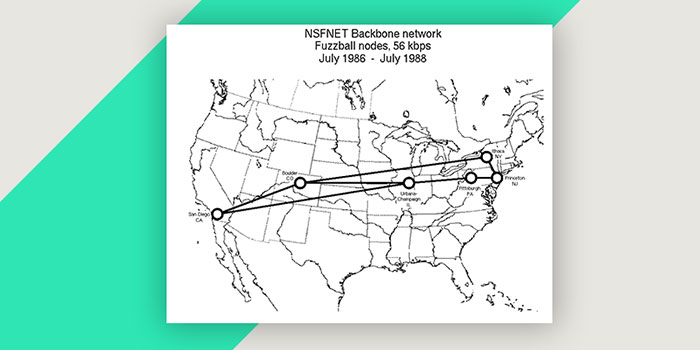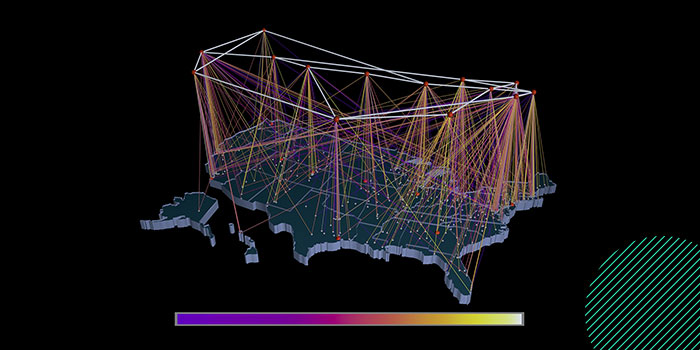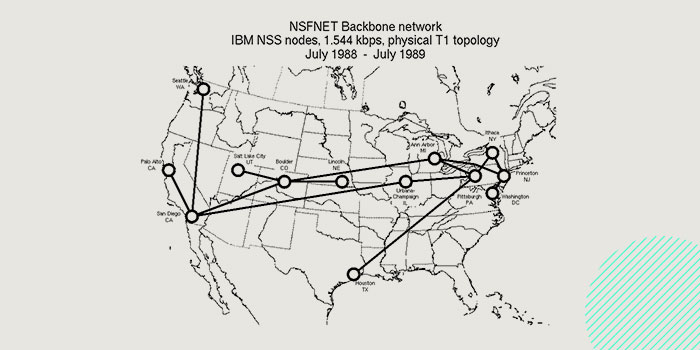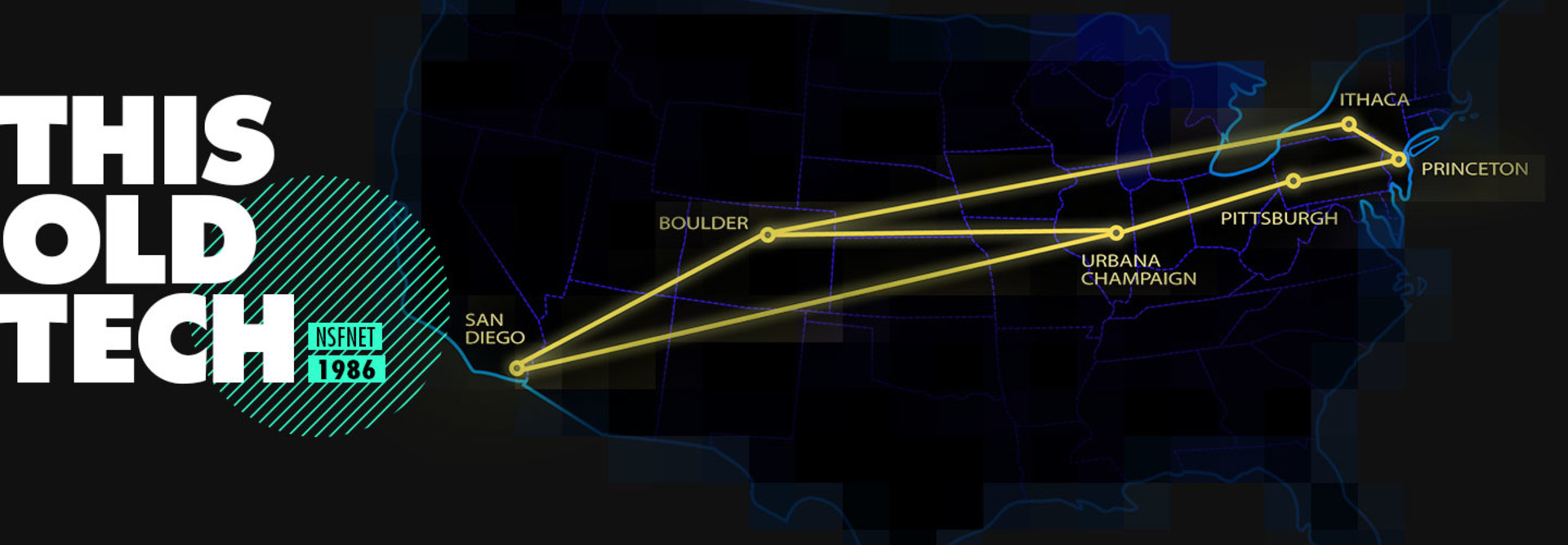What is NSFNET: How This Old Tech Sparked Scientific Research Opportunities
While it’s widely known that the systems that eventually became the internet were developed by the Defense Advanced Research Projects Agency (DARPA) as ARPANET, a lesser-known federal project also served a key role in the development of IP communications.
The National Science Foundation Network (NSFNET), developed to help U.S. research scientists collaborate, was a crucial link between ARPANET and the commercial networks that served as the early public internet’s foundation.
Along the way, NSFNET served as a demonstration for the technical underpinnings of modern networks — routers and switches — and helped lead to the development of faster internet transmission technologies.
WHAT is NSFNET?

Courtesy of National Science Foundation
The National Science Foundation (NSF), a government agency that supports basic research and education in all the nonmedical fields of science and engineering, funded the deployment of the Computer Science Network (CSNET), a network that provided internet services to academic computer science departments, in 1981. By 1985 though, computational scientists in the U.S. were arguing that the only supercomputers they had access to were in Germany, according to Joe Mambretti, director of the Metropolitan Research and Education Network at Northwestern University.
At the time, there were regional networks that linked researchers together. Mambretti, who was then at the University of Chicago, helped set up one of the regional networks. NSFNET would replace these and connect regional networks to each other as a “network of networks,” and serve as a backbone to interconnect new supercomputing centers that NSF would set up.
WHEN Was NSFNET Introduced?

Courtesy of National Science Foundation
In 1985, according to NSF, the agency funded the establishment of four supercomputing centers: The John von Neumann Center at Princeton University; the San Diego Supercomputer Center on the campus of the University of California, San Diego; the National Center for Supercomputing Applications at the University of Illinois; and the Cornell Theory Center, a production and experimental supercomputer center at Cornell University in New York. Later, NSF helped set up a fifth center, the Pittsburgh Supercomputing Center, which was run jointly by Westinghouse, Carnegie Mellon University and the University of Pittsburgh.
At the time, supercomputers were very costly resources (and still are). Mambretti says that part of the motivation for NSFNET was to share resources across a wide community. Another was to enable scientists to regularly access the resources, both remotely and in collaboration. Scientists involved in computational astrophysics, biology, chemistry and materials sciences, as well as weather climate oceanographic modeling, were able to use the network.
NSFNET used Transmission Control Protocol (TCP) and the Internet Protocol (IP) as its communications protocols, borrowed from ARPANET, Mambretti notes, and the network used routers to connect 56-kilobits-per-second links. “All of it was very, very revolutionary at the time,” he says.
NSFNET was also using a key new protocol: Ethernet. This was a key innovation, Mambretti says, since it allowed the network to run a data network over telephone lines.
The NSF decided not to restrict NSFNET to supercomputer researchers, but instead open it to all academic users, according to NSF, and the “flow of traffic on NSFNET was so great in the first year that an upgrade was required.” NSF solicited bids from private companies; the winning bid came from Merit Network, Inc., a consortium of Michigan universities and the state of Michigan, along with private companies IBM and MCI. In 1988, NSFNET upgraded its network to T1 lines, with 1.5 megabits per second of capacity, a major advance at the time.
Rod Wilson, senior director for external research at Ciena, a global supplier of telecommunications networking equipment, says an interesting development emerged from NSF: the realization that entities beyond telcos could find use in these kinds of facilities. Companies like Ciena, which was founded in 1992, sprung up as specialists to optimize the networks that connected these supercomputers.
Mambretti also notes that NSFNET led to the standardization of certain types of internet protocols for the edge of the networks, as well as for Ethernet cards. “This movement toward standards allowed anybody to interconnect,” he says.
WHY Did NSFNET Die Off?

Courtesy of National Science Foundation
As NSFNET became more popular, certain functions were added that appealed to users, including sending general files and email, according to Mambretti. The commercial sector — the forerunners of internet service providers (ISPs) — started to realize there might be commercial applications for these functions.
Although the source code for the World Wide Web was released in 1993, Wilson notes that it was not widely used, and in March 1994 there were only about 1 million people using it.
Mambretti notes that the community of users on NSFNET started to split. Some felt that ISPs would meet their networking needs, while others wanted to return to their regional networks. To continue the development of advanced networking technology, the SNF solicited proposals for a very high-speed Backbone Network Service (vBNS) which, like NSFNET, would focus on providing service to the research and education community. MCI won this award and created a 155Mbps Asynchronous Transfer Mode network.
Wilson notes that other countries began to notice the value of connecting supercomputers and university research centers, which was a precursor to commercial ISPs offering services like email, document sharing, printer sharing and other network resources.
NSF notes that it “awarded contracts in 1995 for three network access points, to provide connections between commercial networks, and one routing arbiter, to ensure an orderly exchange of traffic across the internet.” On April 30, 1995, the NSFNET Backbone Service was successfully transitioned to a new architecture and the NSFNET backbone was decommissioned.
In the earliest implementation of NSFNET, PDP-11/73 minicomputers with routing and management software, known as “Fuzzballs,” served as the routers, since they already used a TCP/IP standard.
"This Old Tech" is an ongoing series about technologies of the past that had an impact. Have an idea for a technology we should feature? Please let us know in the comments!










